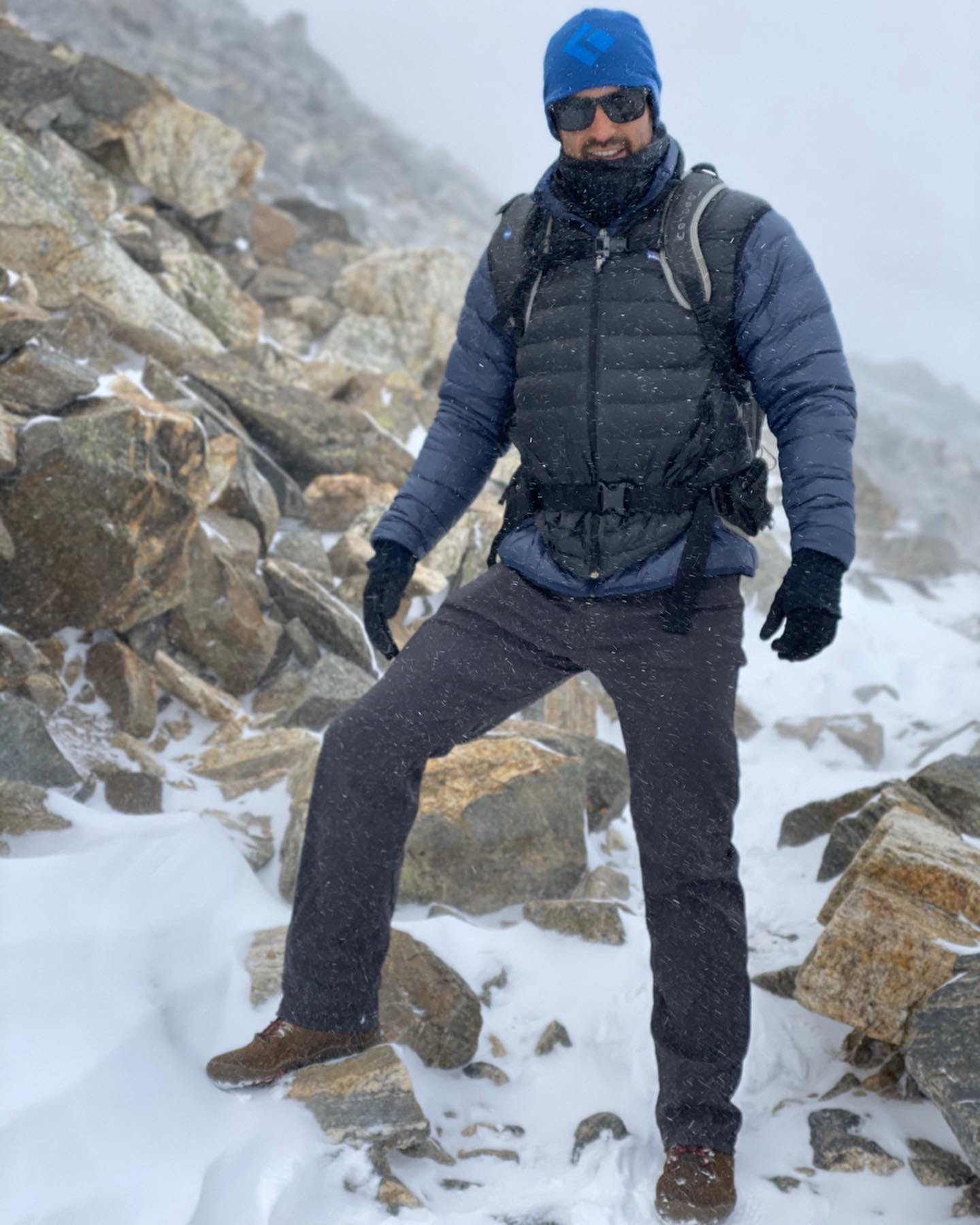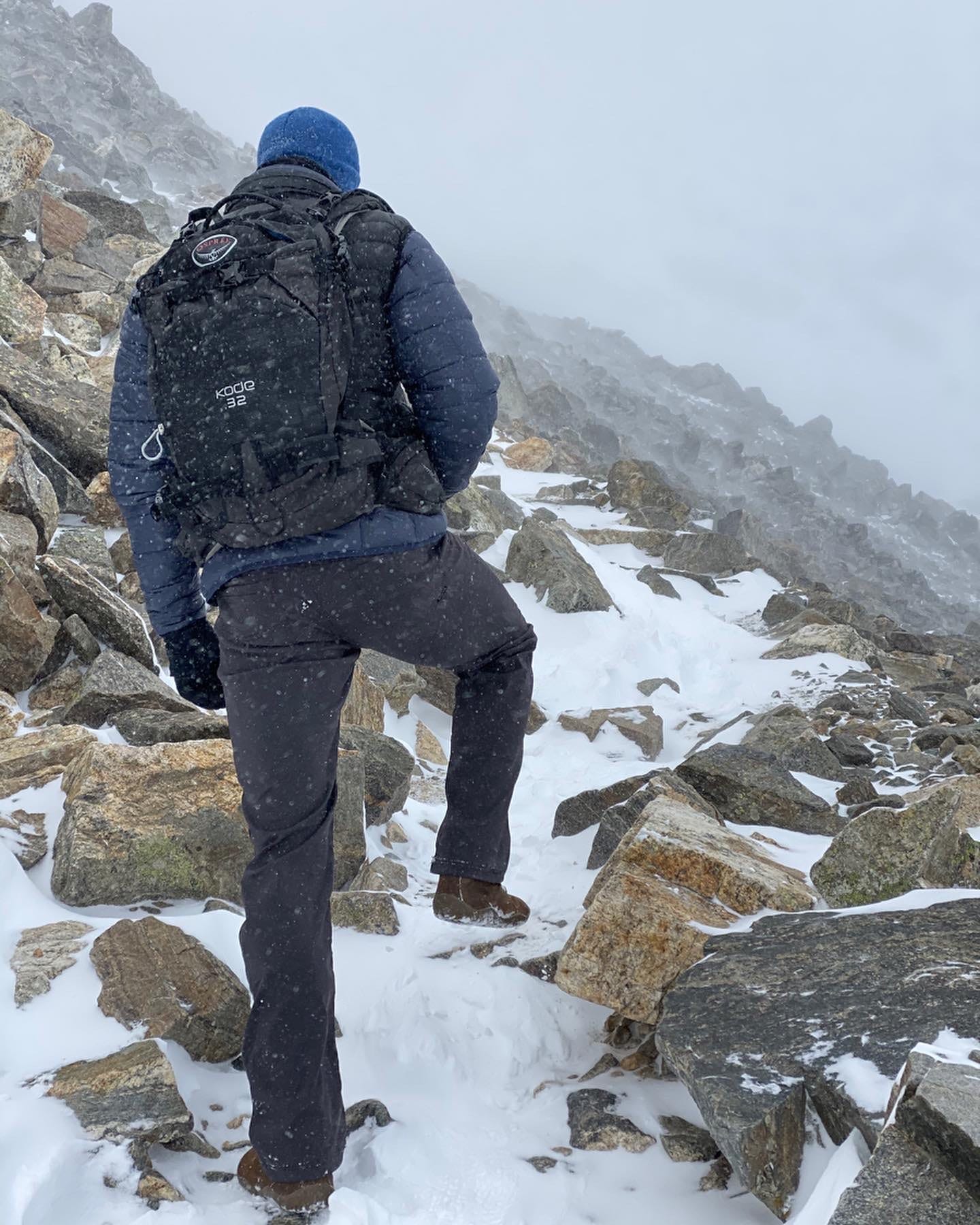In every walk with nature one receives far more than he seeks. - John Muir
The truest test of fitness lies deep within the backcountry. We must not only develop the skills to perform in nature’s elements, but have the prerequisites of a sound mind and body.
If we lack strength, we lose our body’s integrity over long distances. If we lack power, we forfeit our ability to carry supplies up a steep grade. If we lack aerobic fitness, we suffer approaching the distant summit.
Before we discuss the elements of minimalist backcountry training, we must realize that time spent actually practicing the sport is the most crucial element of success.
If you’re a mountaineer or climber, you must spend time on the trails, scrambling, climbing, and know how to use all of your safety gear.
If you’re a hunter, you must devote time to shooting, scouting, tuning your weapon, field dressing and carrying out game.
If you’re a backcountry skier or snowboarder, you should hone well-developed skills in avalanche safety, reading proper chutes and lines, and have extensive mountaineering and rescue experience.
John Parker - Mt. Wilson, CO at 13,000.’
Having trained professionally for the past 15 years, I’ve seen trends come and go. Under the leadership of StrongFirst, I have settled on advanced minimalist tactics as my primary methodology.
Knowing that variety is overrated, I treat my job in program design as developing the most crucial elements for my athletes while disregarding the superfluous.
Crucial Elements for Backcountry Athletes
Strength: Upper Body, Lower Body, Core
Strength and Power Endurance
Aerobic Capacity
The Superfluous for Backcountry Athletes
METCONs
Bodybuilding
Non-Sport Specific Cross Training
The Method
Exercise selection must be methodical. Depending on their current workload, program design will make or break the athlete. The main movement needs to be full-body oriented, train multiple and highly-used joints, and focus on strength and power endurance.
All aerobic training should be performed with SPP (sport specific practice) or proper cross training in the off season.
Accessory work is then calculated based on strength maintenance and the demands of particular backcountry endeavors. In simplicity, these movements must support a strong core, strong pulling musculature, and strong legs.
It is vain to do with more what can be done with less. - William of Occam
The Kit
Since backcountry athletes are often overburdened with necessary gear, the advanced minimalist must choose their tools wisely. This protocol focuses on minimal tools:
Double Kettlebells*
Pull-Up Bar
Step or Bench
*Selected as 70% of the athletes 1RM Double Military Press. [Example: 1RM of double 36kg press = 72kg Press x 0.7 = 50.4kg = ~ 48kg kettlebells = double 24kg bells. I rounded down for simplicity.]
Training Cycle
When working with a client, we discuss their full training schedule. Typically athletes fit into these volume parameters:
Offseason: Moderate to high volume weight training plus low Sport Specific Practice
Preseason: Moderate (+) volume weight training plus high volume Sport Specific Practice
Season: Low volume weight training plus high volume (+) Sport Specific Practice
The Program: Minimalist Backcountry Training
After determining their season, I perform a full assessment and make corrections in length/balance relationships. I then prescribe a standard warmup that should be completed before ALL sporting endeavors and on off days:
Myofascial Release (as needed)
Peanut Upper and Lower Back – 60-120”
Glute Medius – 60-120”/e
Hip Flexors – 60-120”/e
Jump Rope – 3:00min (jumping rope helps to build resiliency in the lower leg tendons and ligaments).
Kettlebell Half Kneeling Halo – 5 reps/side
Kettlebell Arm Bar + Bent Arm Bar – 10-15”/side + 3 reps
Kettlebell Prying Goblet Squat – 30-45”
Kettlebell Cossack Squat – 8 reps/side
Post Workout, I prescribe standard active stretching using the contract/relax method:
90/90 Hip Stretch - 5-8 breath cycles/side: ankle, knee, hip
Tactical Frog + Hip Rocker - 20 rocking reps + 10 reps/side
Lying Hamstrings Stretch - 5-8 breath cycles
Bretzel - 5-8 breath cycles/side
Calf Stretch - 5-8 breath cycles/side
Depending on their skill level, I design an advanced minimalist program using high-workload exercises. For this blogpost, I’ll focus on the king of the mountain:
The Double Kettlebell Clean and Jerk
I primarily favor this exercise because of the distance the kettlebells must travel on every rep. I coach my athletes to push onto the toes after the first dip. The workload of the dip, pushing onto the toes, then the second dip during the catch, are valuable components to training stepping in backcountry sports. They provide valuable benefit to both type I and type II muscle fibers.
And for good measure, each set is completed with an additional 3 front squats. I find leg work very important to building strong lower body musculature. The main focus of high volume lower body sessions being that we are always moving on our legs in the mountains.
Depending on the program, sessions are based off of ladders: 2-3 rounds of 4, 6, 8 reps with a Δ20 (weekly change of 20% in volume) change in subsequent weeks. Sessions are performed twice per week with sport being the dominant training. There are two off days per week.
Schedule:
4 Week Off Season Program:
36 CJ + 42 CJ + 54 CJ + 43 CJ → Δ20 in following weeks. 18 SQ + 21 SQ + 27 SQ + 21 SQ
4 week Pre Season Program:
36 CJ + 46 CJ + 42 CJ + 54 CJ → Δ20 in following weeks. 18 SQ + 24 SQ + 21 SQ + 27 SQ
4 week In Season Program:
36 CJ + 36 CJ + 36 CJ +36 CJ → No Δ20 in following weeks. 18 SQ + 18 SQ +18 SQ + 18 SQ
Accessory Movements
For accessory movements, it depends on the athlete and their goals. However, common exercises I prescribe are:
Turkish Get Ups
The Get Up serves its function by conditioning the core and helping to build shoulder/hip/core stability.
Pull Ups
Pull Ups are crucial for climbers and mountaineers, but the reason I often program them is to counterbalance the high amount of overhead jerks in the program.
Step Ups
Step Ups are the most underrated lower body exercise in my opinion. For the backcountry athlete, step ups equate to more power behind each step.
Example Accessory Exercises during a 4 Week Cycle
Exercise Order: TGU –> PU –> Step Up, 2:00min break, then repeat for 3 sets.
I don’t typically de-load these exercises as I find them to be a crucial piece in maintaining strength. An in- season training session would look like this:
Rest periods for A1. are 2:00-3:00min. Rest periods for B Block are 2:00min.
I believe the backcountry is our birthright. Like the frontiersman in pre-revolutionary America, we are capable of a deep connection with our natural environment. This connection inspires the spirit of growth. In our growth, we inspire others and live a life well-lived.
Stifled by our quotidian lives, our impending self-discovery is written within the hills. Though we may feel caged by our suburban environment, the mountains remain to call us home. Inclining the mind is as simple as an afternoon on an open road. So will you join me?
If you’re not interested in backcountry sports, you can instead use this program for advanced minimalist training. This program is perfect for those looking for improved power endurance, strength maintenance, and developing resiliency in the body.
I have tested this program for the past two months and have had incredible results with my conditioning and fat loss. If I were to swap anything in this program it would be only the accessory exercises. They can be fine tuned as needed.
In conclusion, Minimalist Backcountry Training puts the focus on your actual sport while still building fitness during your biweekly weight training. I hope you have enjoyed this blog post, for I have enjoyed writing it.
John Parker
February 13, 2022











